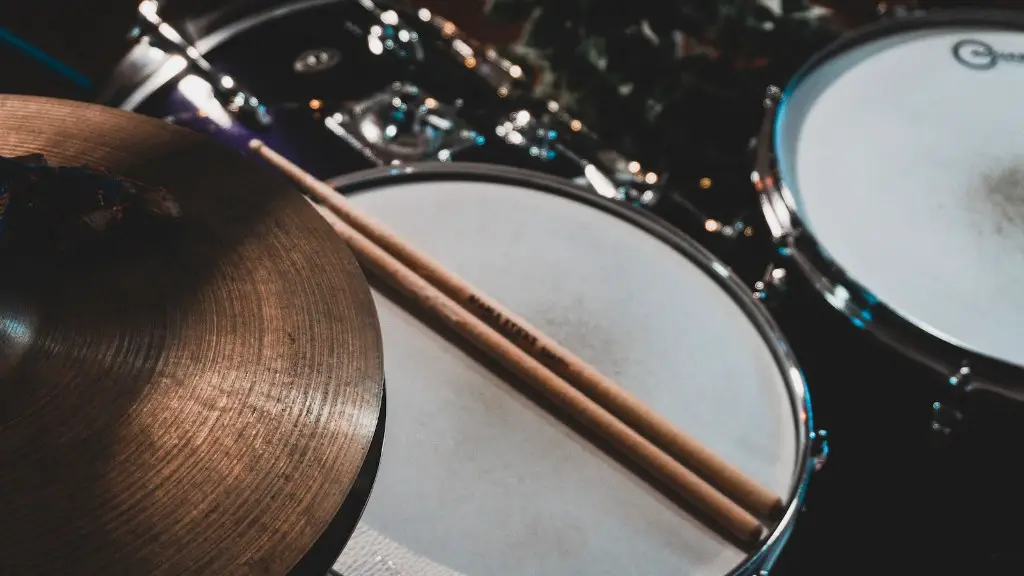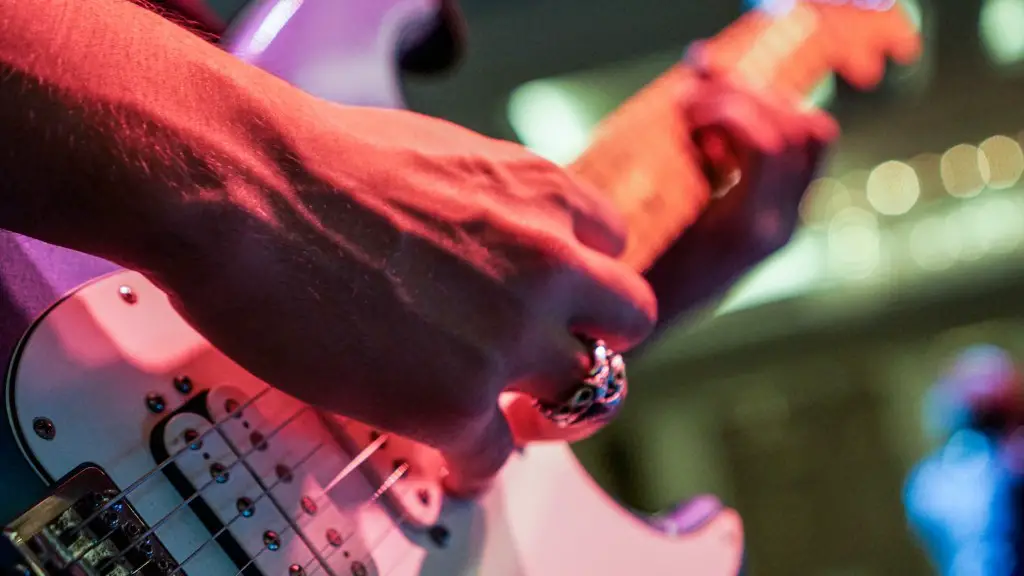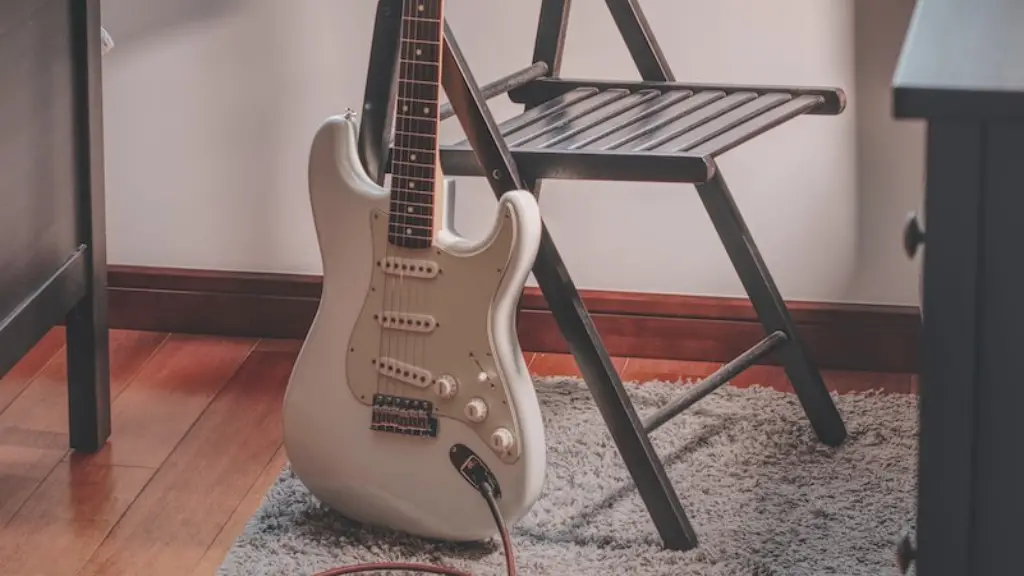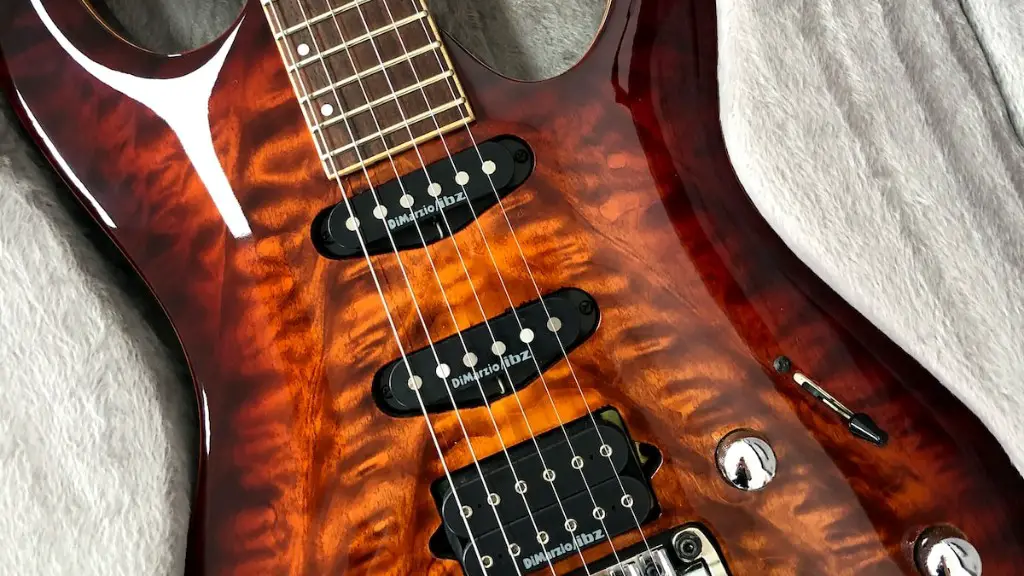Playing ghost notes on drums is a great way to add texture and dynamics to your drumming. Ghost notes are played in between the main beats of a song, usually on the snare drum or hi-hat. They are usually softer than the main beats and can be used to create rhythmic patterns and fills.
To play ghost notes, you’ll need to use a loose grip on your sticks and focus on keeping your wrists relaxed. It’s important to keep your wrists low, as this will allow you to play quieter notes with less effort. You can use either single strokes or double strokes when playing ghost notes, depending on the music you are playing.
It’s also important to practice playing ghost notes at different speeds and with different dynamics – from very soft to very loud – as this will help you develop more control over your sound. With practice, you’ll be able to create interesting rhythms and fills using ghost notes!
Understanding the Basics of Ghost Notes
Ghost notes are an integral part of modern drumming, providing a subtle yet powerful percussive texture that can add depth and character to any song. A ghost note is played by lightly tapping or brushing the drum or cymbal head without fully striking it. This creates a soft and muted sound that often gets lost in the mix. Ghost notes are used to accentuate certain beats, create dynamics between verses and chorus, and give subtle emphasis to certain phrases in a song.
The placement of ghost notes is very important as they can often be difficult to hear and feel when playing. Therefore it’s important to practice their placement so they don’t interfere with other instruments or rhythms. It’s also important to experiment with different rhythms, such as playing two eighth notes against one quarter note, or alternating between ghost notes and full strikes for more dynamic patterns. By experimenting with these techniques, you can create unique rhythms that will stand out in your music.
Examples of Ghost Note Patterns
Ghost notes are musical notes with a quieter sound than the main melody, used to add an extra layer of texture to the music. They can be played on drums, bass, electric guitar, and other instruments. Ghost note patterns are rhythmic patterns that use ghost notes. They often emphasize the syncopation and off-beat elements of a song, emphasizing the groove and creating interesting textures. For example, a drummer might play a short snare pattern on the back beat with ghost notes on the upbeats. Bassists often use ghost notes in their grooves by playing slightly muted notes between the main notes. Electric guitarists use ghost note patterns to create accents within their riffs. Ghost note patterns can also be used to create interesting fills or bridges between sections of songs.
Boldly played ghost notes can add an extra layer of energy to any groove, especially when combined with dynamics like accents and staccatos. They can also provide contrast between sections of songs and help create tension or excitement that builds as it approaches a climax. Ghost note patterns are an essential part of many styles of music from funk and jazz to hip-hop and metal, adding subtle but powerful textures that bring life to the music.
How to Incorporate Ghost Notes into Grooves
Ghost notes are one of the most important elements of drumming. They provide a subtle rhythmic texture that adds complexity and depth to grooves. Ghost notes are usually played on the off beats, but can be used in any part of the groove. To incorporate ghost notes into your playing, start by listening for them in your favorite tracks and transcribing them onto paper. Then, practice them with a metronome to develop an accurate sense of timing.
Once you’re comfortable playing ghost notes with a metronome, it’s time to start adding them to your grooves. Start by playing through the groove without ghost notes and then add in one note at a time – listening for how they fit in different places within the groove. Keep experimenting until you find the right balance between the main beats and the ghost notes. This process may take some time, but it will help you create dynamic, interesting grooves that draw listeners in.
Finally, try playing around with dynamic changes – playing louder or softer ghost notes in different parts of the groove. This is a great way to create musical interest while still keeping your groove tight and solid. With practice and experimentation, you can learn how to incorporate ghost notes into your playing and create amazing grooves!
Practicing with Different Dynamics Levels
Playing with a variety of dynamics levels can help you become a better musician. Dynamic levels refer to the loudness or softness of a musical passage, and they can give emotion and character to your musical performance. By playing with different dynamic levels, you can add subtle nuances and flourishes to your music and bring out the beauty of the piece.
When practicing with different dynamic levels, start by playing the same passage multiple times at the same volume. As you become more comfortable with it, begin to vary the volume level on each repetition. Start with small differences in volume, then gradually increase them until you’re able to play a passage at various dynamics levels comfortably. You’ll be surprised at how much expression you can bring to your playing when you explore dynamics!
Developing Your Own Ghost Note Patterns
Ghost notes add an extra musical layer to your playing and they can be applied in various musical styles. Developing your own ghost note patterns can be a fun and creative way to take your music to the next level.
Ghost notes are usually played with a muted or choked sound, so you’ll want to practice playing muted notes in various rhythms and combinations. Start by focusing on one hand at a time, playing each note for the same amount of time. Once you become comfortable with this, start experimenting with different rhythms, combining both hands and varying the volume of each note.
Adding dynamics is an important part of creating ghost note patterns. Experiment with accents, crescendos and decrescendos, as well as changing up the tempo in order to create more interesting patterns. To further enhance your ghost notes, try adding slides or vibrato as well.
Once you have developed some basic patterns, practice playing them in different styles such as rock, jazz or blues. You should also practice applying them in different musical contexts such as single-note melodies or chords. With enough practice, you will be able to create unique and interesting ghost note patterns that will add depth to your music!
Enhancing Your Grooves with Ghost Notes
Ghost notes are an essential part of drumming, as they add a subtle layer of texture and complexity to any rhythm. These ‘invisible’ notes are usually played at a very low volume and can be used to spice up any groove or fill. They can also be used to create an interesting contrast between different sections in a song. Learning how to play ghost notes correctly can take some practice, but it’s worth the effort.
First of all, you need to understand what ghost notes are and how they should sound. Ghost notes are usually short notes which are played at a much lower volume than the main beats. The idea is that they should be heard almost as if they were part of the background; in fact, these notes should almost disappear into the overall sound when played correctly.
Once you’ve got your head around what ghost notes are, you need to start practicing playing them on your drums. To do this correctly, you need to use your hands rather than sticks and hit the drums with a light touch; this will ensure that the ghost note doesn’t overpower the rest of the beat or fill.
It’s also important to use good technique when playing ghost notes; make sure that your strokes are consistent and that you don’t rush through them too quickly. A great way to practice is by playing along with a metronome or drum machine; this
Final Words
Ghost notes are an important part of drumming, and are a great way to add some extra flavor and spice to your drumming. They can be used in a variety of ways, from adding subtle accents to creating exciting fill patterns. With practice, you can begin to incorporate ghost notes into your drumming, and they will become second nature. By understanding the basics of how ghost notes work, you can start using them to add dynamics and texture to your playing. Remember that the key is to practice and experiment with different techniques until you find something that works for you.





